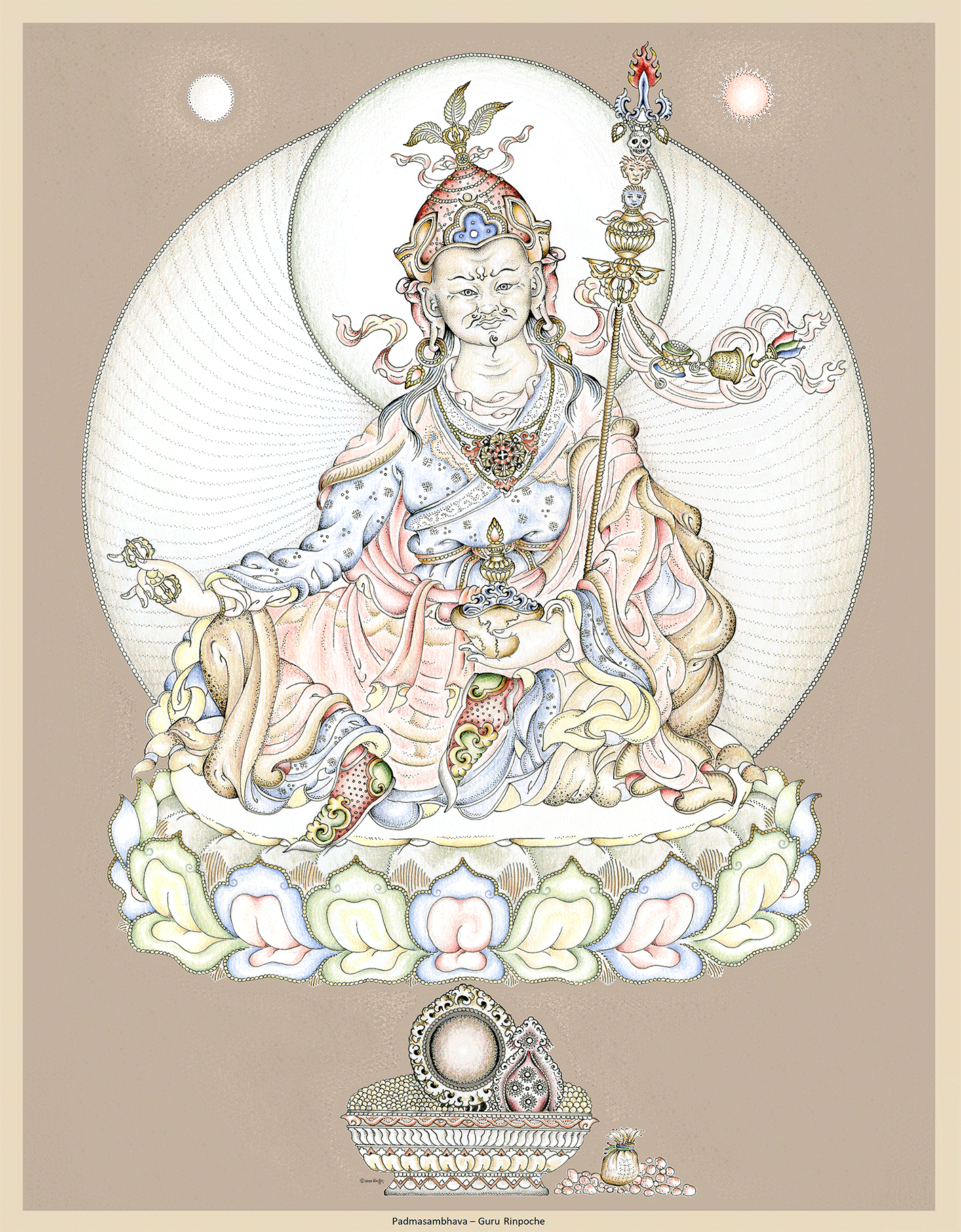Padmasambhava, The “Lotus Born” – The Precious Teacher, Guru Rinpoche (Tib.)
Widely venerated as the “second buddha”, he is shown with an expression of power and concentration with eyes wide open, seated in the royal posture, holding implements of power – the vajra scepter in a threatening gesture in his right hand, and a skull bowl in his left, symbolizing the realization of emptiness.
Dressed in complex robes – the robes of a monk as well as the garments of a king, Guru Rinpoche is both a member of the religious and worldly royalty. On his head is a unique five-petalled lotus hat with a sun and moon symbolizing skillful means and wisdom, a vajra scepter symbolizing meditative concentration and feathers representing the realization of emptiness.
Held by his forearm and leaning on his left shoulder is the khatvanga, the yogi’s staff, with a vajra cross symbolizing the union of wisdom and compassion, a vase of elixir, three heads symbolizing the conquest of the three poisons and a trident symbolizing the mastery of the three central channels of the yogi subtle nervous system.
Invited from india in the 8th century, Padmasabhava was instrumental in the construction of the first Buddhist monastery in Tibet, Samye monastery. Even more importantly, to the Tibetans Guru Rinpoche embodies all the attributes of the buddhas and bodhisattvas, the attainment of the Tantric practice and the temporal and spiritual power associated with its attainments. Images of Guru Rinpoche are commonplace and his mantra, Om Ah Hum Vajra Padma Sidhi Hum, is often on the lips of Tibetans.
Ⓒ 2003-2021 Matmonet All Rights Reserved
